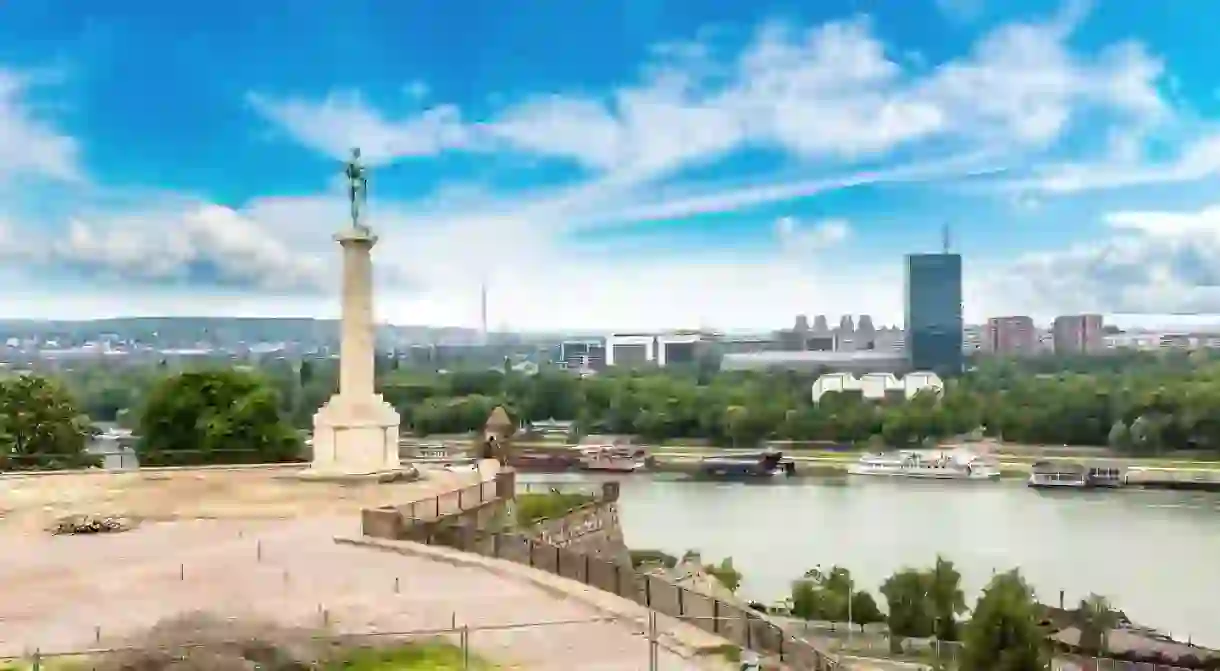Top 10 Things To Do in Stari Grad, Belgrade

Rather surprisingly for an iconic city in the Balkans, Belgrade doesn’t really have a Stari Grad (Old Town) in the traditional sense. It does exist in a wider sense though, and the capital’s city centre circle is generally referred to as Stari Grad by some. There’s no shortage of things to see and do either.
Explore what Stari Grad and the rest of Belgrade has to offer with these bookable tours, trips and experiences
Stroll down Knez Mihailova
Belgrade’s showpiece street is a little contradiction in itself, situated in the middle of Stari Grad but as far removed from ‘old’ as you’ll find. Belgraders of all genders and generations fill the street from sunrise to sunset, enjoying a coffee with friends or simply walking to be seen. The thoroughfare has become one of the town’s most popular attractions in the process, a chance to see the beating heart of this most energetic city.

Belgrade’s most romantic sunset
Kalemegdan Fortress sits atop the list of essential attractions in Belgrade, and for good reason. The imposing fortification stands proud above the confluence of the Sava and the Danube rivers and envelops Belgrade’s most delightful park, along with a number of museums, galleries, monuments and the rest. It is from here that the most romantic spot in the city can be found, as the sun sets over the rivers with the menacing silhouette of New Belgrade in its wake. It is a remarkable view.

Meet ‘by the horse’
Belgrade’s number one meeting point is undoubtedly Republic Square (Trg Republike), and people gather in wait here from dusk until dawn (and beyond). A statue of Prince Mihailo on a horse is the main event, a monument that has the honour of being the first equestrian statue in Serbia. The plaza is ringed by some of Belgrade’s most impressive buildings, along with many of its most important institutions.
Dine in style on Skadarlija
In keeping with the general curiosity of Belgrade, the city’s Bohemian Quarter is not a quarter and no longer resembles anything truly ‘Bohemian’. Skadarska is the name of the street but Skadarlija is how it is known, a cobblestone walkway lined with traditional restaurants and not-so-traditional bars. It comes alive at night, and is a great spot to get a bite to eat in the Serbian capital.

Relax in Kosančićev Venac
Built on an Ancient Roman necropolis, Kosančićev Venac is one of the most delightful neighbourhoods in the entire city. This is the oldest part of the city outside of Kalemegdan, although much of that history was demolished during the violence of World War II. The cobblestones remain, and Kosančićev Venac rose again to become the city’s prettiest community.
The graffiti of Partizan country
We are well in truly in love with Belgrade, but even we have to admit that most of the graffiti in the city are awful at best. Dorćol bucks this trend with an impressive series of murals however, depicting poets, actors and other iconic Serbs as members of the wider Partizan Belgrade family. For every hastily scrawled ‘Jelena Volim Te’ there is a detailed depiction of Eddy Grant in a Partizan shirt, each picture more interesting than the last.
Explore a cultural phoenix
While we’re still a little skeptical, the National Museum in Belgrade is soon to open its doors again after 15 long years of closure. The neglected museum on Republic Square has literally been closed since Yugoslavia was still a name on the international stage, so visitors can expect a lot of fanfare when the doors open again on June 28. We’re as intrigued as anyone as to what lies inside.

Breathe in the air of Jevremovac
Belgrade is a chaotic city, one of noise and chatter and almost incessant smoke, but escaping from it all is as easy as walking through the gates into paradise. Well, not quite paradise itself, but the Jevremovac Botanical Garden feels like a world away from the traffic and confrontational spirit of the streets that surround it. Its creation was the last wish of Serbian botanist extraordinaire Josif Pančić, and its lush greenery offers a tranquility that can’t be found anywhere else in town.
Celebrate victory in Kalemegdan
It is a typically Serbian thing that the most famous statue in the city is of a naked man on a huge plinth. The city’s Pobednik (Victor) Monument stands at the edge of Kalemegdan, looking out over the river towards New Belgrade, although this wasn’t always the case. It used to stand in Terazije, but frequent complaints from elderly ladies about the statue’s posterior meant it had to move. It remains Kalemegdan’s most memorable memorial.

Hit the bars of Dorćol
Dorćol may well be Belgrade’s most interesting neighbourhood, and that has a lot to do with the mass of bars, cafes and pubs. The attention lavished on Beograd’s legendary nightlife might focus primarily on the clubs that rest on the rivers, but the variety and atmosphere in Dorćol gets the thumbs up from us. Beer lovers, cocktail fiends, and spirit connoisseurs will all find a bar to love in this part of town.

Visit Belgrade’s only mosque
Despite more than five centuries of Turkish Ottoman rule, only one mosque remains in Belgrade today – this is the Bajrakli Mosque, located in Dorćol just a short walk from Student Square. It was built in 1575 and has seen 272 other mosques destroyed in the years since the end of the Islamic occupation. It has seen its fair share of problems over the years, but things have calmed down considerably and it is once again another string to Stari Grad’s impressive bow.













